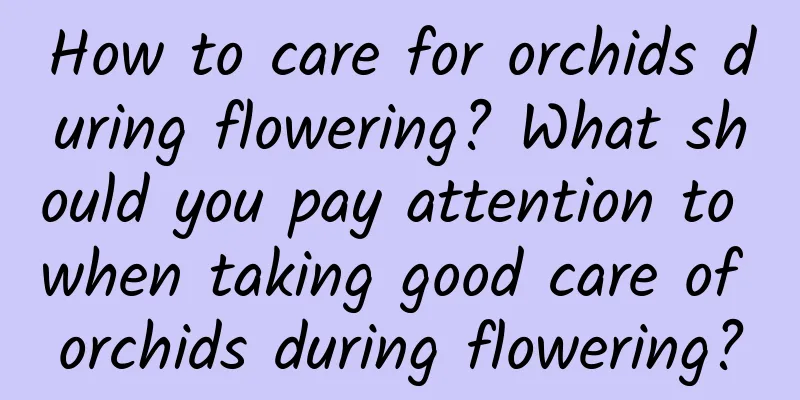The simplest way to grow Phalaenopsis

|
Phalaenopsis is a flower that many people like. It has a very unique appearance, bright colors and high ornamental value. Many people like to grow Phalaenopsis. Here I will introduce to you the simplest way to grow Phalaenopsis. 1. Pot soil It is best to choose a larger pot for growing Phalaenopsis, with a diameter of about 30 cm, a strong bottom drainage system, and loose and breathable soil. When planting, you can add some leaf mold, peat soil, etc. to the soil. You can also add some small stones to the bottom before planting. In addition, you can also lay a layer of moss on the soil surface to achieve a moisturizing effect. 2. Watering Phalaenopsis needs to be watered twice a week during the growing season. Just keep the soil moist. You can spray water on the plant to keep it moist and pay attention to indoor ventilation. When the weather is warm, the Phalaenopsis orchid needs to be moved outdoors for cultivation and exposed to more sunlight. If the temperature is above 25 degrees, the Phalaenopsis orchid must be moved indoors. When watering in spring, try not to water at night because the temperature will drop at night, so it is best to water during lunch. 3. Fertilization Phalaenopsis definitely needs fertilizer to grow, and its root system is relatively thick, like a radish root. The fertilizer requirements are relatively high, so it must be applied thinly and frequently. During the growing period, you can use multi-element fertilizer. During its bud formation period, potassium dihydrogen phosphate should be used. Stop using fertilizer when the first flower bud opens. 4. Pruning After all the Phalaenopsis buds have withered, they need to be cut off in time. Even if they are not cut, they will fall off by themselves, but it will consume a lot of nutrients, so it is better for us to prune them manually. 5. Ventilation Phalaenopsis likes a well-ventilated environment, so open windows frequently for ventilation. Especially after watering, allow ventilation to take away some excess moisture so that water does not easily accumulate. 6. Lighting Phalaenopsis likes light, but is afraid of direct sunlight. When keeping it indoors, you can place it near a well-ventilated window and give it two hours of sunlight every day, or sufficient scattered light will also be fine. Provide adequate shade in the summer, as strong light can easily burn the leaves. That’s it |
<<: How to care for the newly bought flying feather arrowroot
>>: How to care for the newly bought peony
Recommend
How to hydroponically cultivate Aspidistra
1. Select the tools Choose a suitable container a...
How to trim Tiger Eye Dieffenbachia to look good
When is the best time to prune Tiger Eye Evergree...
What flowers are suitable for growing in Ji'an? What are the city flowers and trees?
1. Climate characteristics of Ji'an Ji'an...
When is the right time to prune asparagus?
When is the right time to prune asparagus? Aspara...
How many years does it take for green plums to bear fruit?
Growth habits of greengage trees The green plum t...
How to plant Lilium odoratum seeds
1. Introduction The germination rate of Lilium od...
Can orchids be immersed in pots or can they be watered directly with a watering can?
1. Orchids can be watered by immersion method Orc...
How to water the succulent Yamato Kin
1. Habits and characteristics Before learning how...
How to Propagate Calla Lily
1. Methods of reproduction 1. Divide the ball Thi...
Cultivation methods and precautions of large-leafed green radish
1. Soil It is best to use slightly acidic soil fo...
Can roses be grown in the north?
Can roses be grown in the north? Roses can be gro...
What trees are suitable for planting in the house? 4 Feng Shui trees suitable for planting in the courtyard
It is suitable to plant trees with high ornamenta...
What to do if the Aspidistra doesn't grow new leaves
1. Temperature This is a plant that originally gr...
Why do apricot trees only bloom but not bear fruit?
When do apricot trees bloom? The flowering of apr...
Jasmine repotting and soil changing methods and precautions Jasmine repotting time and soil
Before repotting jasmine, make sure to water it t...









